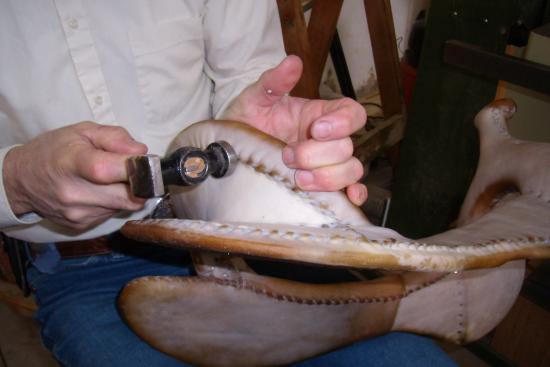Rawhiding - again...
We are no longer building saddle trees, but we have two videos about how Western saddles fit horses available on our westernsaddlefit.com website.
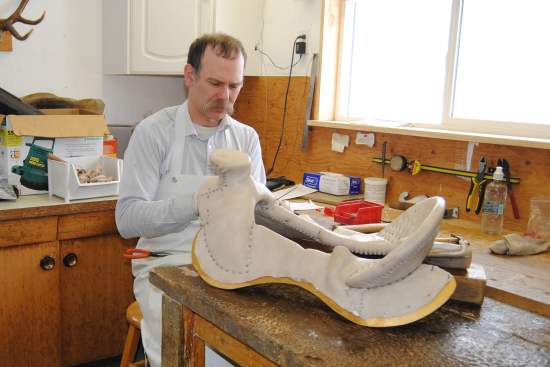
So, how many pictures of Rod sitting rawhiding a tree can I post before people get totally bored? But this is how he spends about a third of his time in the shop. Not the most glamorous part of tree making (if any of it is glamorous…). In fact, this is the part that a number of tree makers get their wives or hired help to do. Fortunately, I’m not in that group! And actually, doing the rawhiding has been the hardest part of tree making to get right. Why? Because rawhide is… rawhide. While wood is still a natural material and moves a bit now and then - rawhide?? Well, it has a mind of its own!!
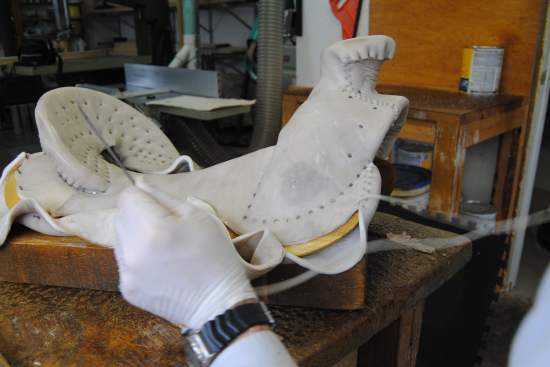
One of the things Rod had to learn was where to leave the hide loose and where to stitch it more tightly, because rawhide doesn’t dry evenly. For example, in the center of the bar, Rod pulls the pieces together really tightly and they never separate. You can’t leave extra slack there because it doesn’t always go away. But the front bar tip likes to gap. Whether it is because there is a longer way for the hide to contract as it dries (down the whole length of the bar - but it doesn't do it at the back of the bar), or because of the shape of the stitching (an outside curve - but that isn't consistent either), or because the sky is blue (most likely...) - who knows for sure. But when he stitches this area he always leaves some slack or else he will get a lot of gapping in the seam there. And he knows all these places all around the tree – now. (Note the flying lace as Rod pulls his stitch tight.)
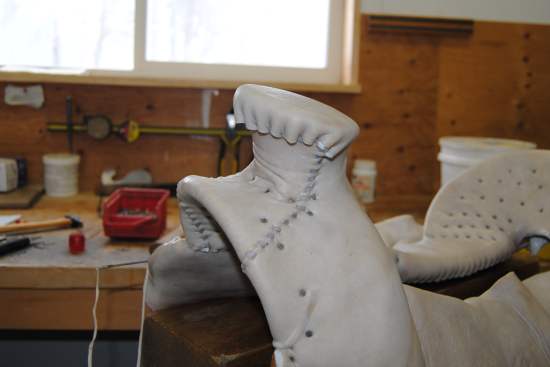
Other places you look at the hide when it is fresh and figure it will never pound down flat. Under the horn cap is one of those places. This is how it normally looks when it is just sewn. You have much more hide coming over the top of the horn than coming up under the gullet so you have puckers in the top hide between every stitch.
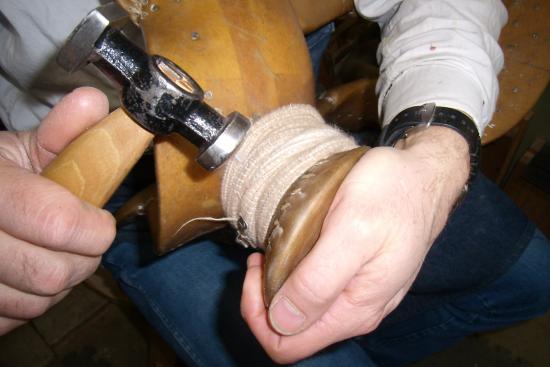
And this is where pounding down the seams as they dry comes in.
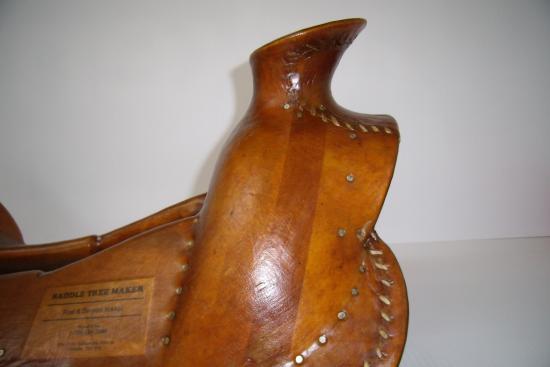
And so you end up with a flat surface to put the leather on.
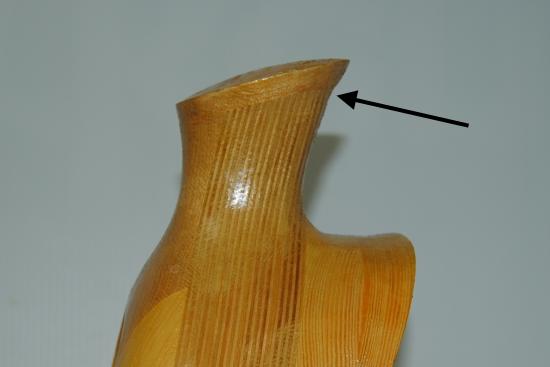
Actually, Rod has a little trick he uses here. The seams will sometimes not pound down totally flat there because the hardwood doesn't indent under the seam like yellow poplar or pine do. (You can see this if you ever de-rawhide a tree.) So he makes a bit of a groove in the horn right under the cap where the seam will lie to help accommodate that extra thickness. This helps the look of the horn in case the rawhide won’t behave and get totally flat there. It is so slight it is tough to see in a picture, but it is there. Just another one of those little things that make a difference in the finished product…
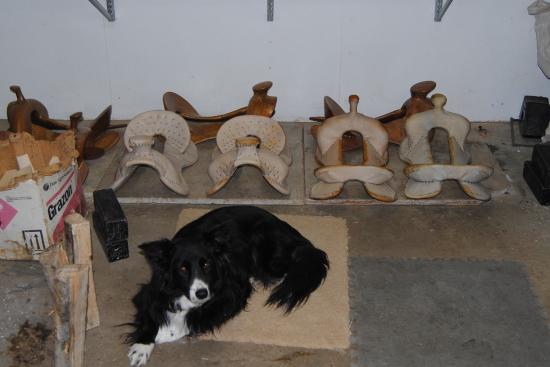
So here are the last couple day's trees starting to dry (along with Taylor the Wonder Dog in her usual spot). You will see puckers in places, lumpy seams, all sorts of things that look bad right now. But when they are dry, they will be smooth for the saddle maker to build on. And that is because there will be a whole lot of this going on in the mean time…
